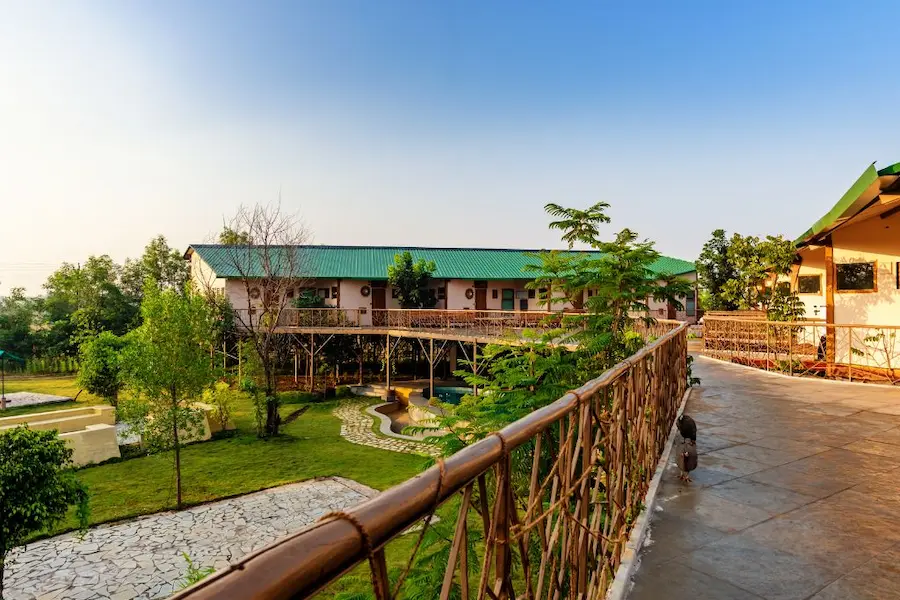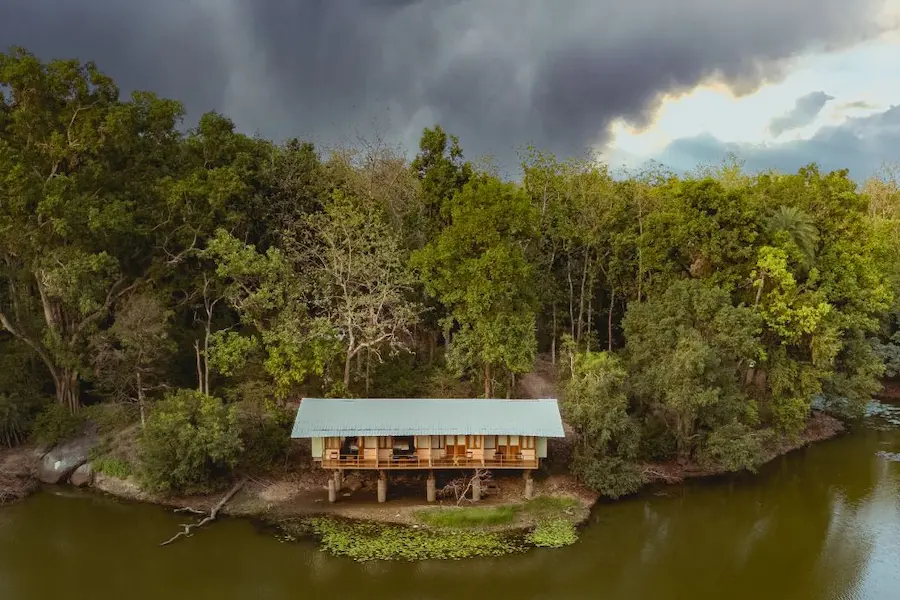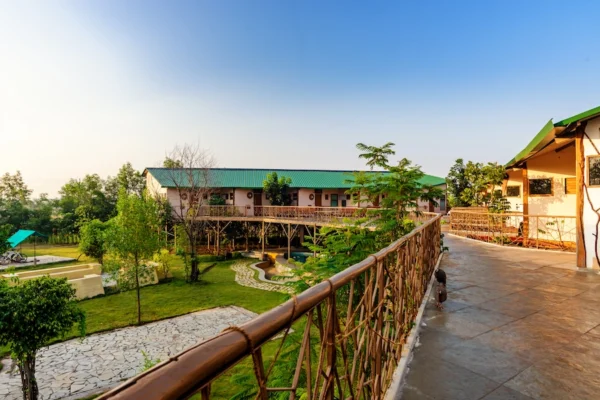India is a country of dramatic contrasts and extraordinary natural wealth. Beyond its crowded metropolises and architectural wonders lies another India—quieter, wilder, and astonishingly biodiverse. The country’s forests, sprawling across more than 20% of its geographical area, are among the richest in the world in terms of flora and fauna. These are not merely green stretches of land, but thriving ecosystems that nurture the majestic Bengal tiger, the elusive leopard, the rare barasingha, and over 1,300 bird species. India’s forest corridors are a living, breathing legacy of evolution, teeming with life and mystery.
In this landscape of ancient trees and whispered trails, Jungle Camps India emerges as a torchbearer of experiential and responsible travel. With a unique philosophy that blends luxury with sustainability, Jungle Camps India is redefining how travellers engage with the wild. These wildlife resorts in India are not just places to stay—they are portals into the soul of the jungle.
This is a journey through India’s most iconic forests, as seen through the lens of Jungle Camps India. From the sal-draped landscapes of Kanha to the teak woodlands of Pench, from the bamboo thickets of Tadoba to the vital corridor of Rukhad—each destination offers a distinct expression of India’s wilderness, reimagined through immersive hospitality.
Kanha Jungle Camp: Home of the Barasingha and Soulful Solitude

Nestled on the edge of the buffer zone in Madhya Pradesh’s celebrated Kanha Tiger Reserve, Kanha Jungle Camp is a masterclass in quiet elegance. The Kanha landscape is often described as Kipling country, an enchanted realm of misty meadows, dense sal forests, and sinuous rivers. It is here that the rare hard-ground barasingha was brought back from the brink of extinction, a conservation triumph that remains one of India’s most compelling wildlife stories.
Kanha Jungle Camp stands as a model of mindful construction and low-impact luxury. Designed using natural materials and earthy aesthetics, the camp merges seamlessly with its environment. Each suite opens into the forest, blurring the boundary between architecture and wilderness.
The camp’s rewilding efforts are subtle yet effective. Native grasses have been reintroduced in open spaces, local tree species nurtured, and light pollution minimized to let nocturnal life flourish. Conservation is not an event here—it is an ethos.
Among the most cherished nature-centric experiences at Kanha are guided forest walks with trained naturalists, birding trails in the buffer, and nighttime storytelling sessions that recount tribal lore and ecological histories. The area’s rich biodiversity—including gaur, wild dog, tiger, and over 200 bird species—makes every outing a potential revelation.
Explore our Kanha Wildlife Resort
Tadoba Jungle Camp: Where Wilderness Roars

Located near the Moharli gate of Tadoba Andhari Tiger Reserve in Maharashtra, Tadoba Jungle Camp offers a wilder, rawer jungle experience. Tadoba is one of India’s oldest and most prolific tiger reserves, famed for its high tiger density and unfiltered forest energy. Here, the forest is alive with sound—of cicadas, peacocks, langurs, and the occasional growl in the night.
Tadoba Jungle Camp is built to celebrate this intensity. The design is contemporary yet earthy, and every structure has been positioned to avoid disturbing existing trees and wildlife movement corridors. Solar panels, water harvesting systems, and a strict no-plastic policy underline the camp’s commitment to sustainability.
The rewilding approach here focuses on restoring degraded land around the camp with indigenous plant species. The result is a vibrant green buffer that acts as a secondary habitat for birds and small mammals.
The experiences at Tadoba are thrilling. From sunrise jeep safaris where tigers often cross your path, to late evening herpetology walks, this camp invites travellers to experience the jungle at multiple levels. Cultural interactions with the Gond and Kolam tribes add a human dimension to the ecological richness.
Explore our Tadoba Wildlife Resort
Pench Jungle Camp: A Symphony of Shadows and Stripes

If any forest in India can lay claim to literary fame, it is Pench—the inspiration behind Rudyard Kipling’s The Jungle Book. Today, the Pench Jungle Camp, located near the Turia gate of Pench National Park, continues that story with fresh authenticity. Surrounded by undisturbed teak forests and seasonal streams, the camp provides a lush and tranquil base to explore this famed tiger territory.
What sets Pench Jungle Camp apart is its seamless integration with the forest. From mud-plastered walls to natural cooling systems, the camp design echoes the vernacular traditions of Central India.
In terms of rewilding, Pench Jungle Camp has reintroduced native flowering shrubs and fruiting trees to attract pollinators and frugivores, helping to restore local ecological balance. These efforts are bolstered by community-led habitat restoration initiatives.
Guests can enjoy a host of nature-centric experiences: butterfly walks, star-gazing nights in India’s first certified Dark Sky Reserve, and night safaris in the buffer zones of Rukhad, where nocturnal creatures like civets, owls, and porcupines reveal the jungle’s secret life.
Explore our Pench Wildlife Resort
Rukhad Jungle Camp: The Pulse of a Corridor Forest

Often overshadowed by its more famous neighbours, Rukhad Jungle Camp is a conservation gem. Located in the Rukhad buffer forest, which connects Pench and Kanha, this camp plays a pivotal role in preserving a vital wildlife corridor. Tigers, leopards, and wild dogs use these passageways to travel between reserves, making Rukhad a biological lifeline.
The camp embraces rustic minimalism. Its stone-and-wood cottages are designed to be weather-sensitive and blend with the forest topography. The absence of intrusive lighting, loud amenities, or excessive landscaping means animals often come close to the camp’s periphery.
Here, rewilding means leaving nature to do her work. Abandoned farmland has been allowed to regenerate, with minimal human intervention beyond removing invasive species. The camp acts more as a facilitator than an architect of change.
Unique experiences include day-long nature immersions, primitive fire-making workshops, and moonlight forest meditations. Rukhad is less about sightings and more about sensing—a place to feel the pulse of the wild.
Jungle Camps India: Redefining Wildlife Resorts in India
Across all four locations, Jungle Camps India is setting a new benchmark for wildlife resorts in India. The emphasis is on authenticity, ecological mindfulness, and cultural sensitivity. Each camp employs over 90% local staff, ensuring not just economic empowerment but also the preservation of indigenous knowledge systems. Food is locally sourced, often organic, and menus are designed to reflect regional culinary traditions.
Moreover, Jungle Camps India is deeply invested in rewilding and conservation education. Guests are invited to participate in sapling plantations, attend wildlife talks, and contribute to citizen science projects. The camps also run school outreach programs and support community health initiatives in neighbouring villages.
With India’s eco-tourism market projected to grow exponentially in the coming years, Jungle Camps India is not just riding the wave—it is helping shape its course. It represents a shift from voyeuristic wildlife tourism to one rooted in learning, respect, and regeneration.
Conclusion: The Forest as Mentor and Muse
In an age of overstimulation and digital fatigue, the Indian forest offers something radical—stillness, clarity, and connection. Jungle Camps India invites travellers to explore this world not as outsiders, but as conscious participants in its rhythms.
Whether you are tracking tigers in Kanha, listening to cicadas in Tadoba, stargazing in Pench, or meditating under the moonlight in Rukhad, each experience is a return to something elemental. These are not just stays; they are stories.
And as India’s wild places continue to evolve, protected and celebrated, there is perhaps no better way to understand them than through these remarkable sanctuaries of place and purpose.



